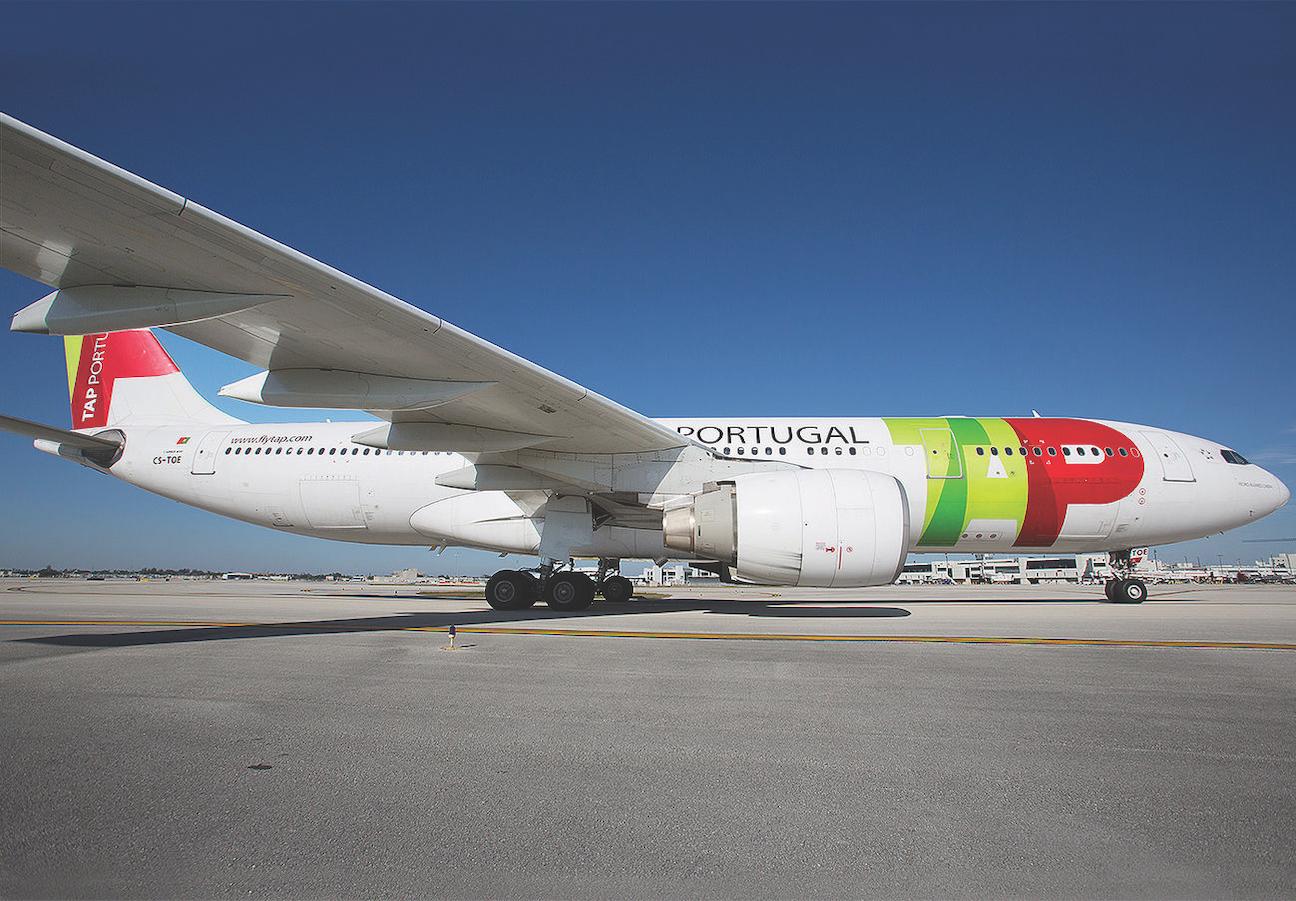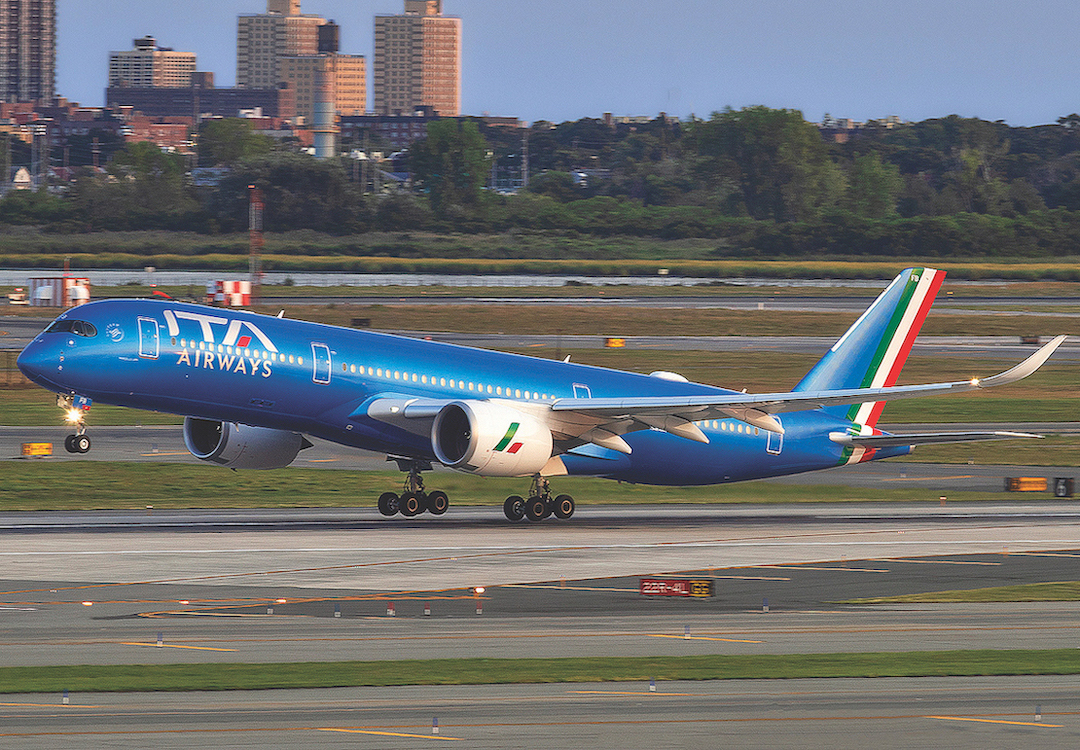
Air France-KLM is interested in TAP and its long-haul network.
With the worst of the upheaval and limitations linked to the COVID-19 pandemic fading, Europe’s airlines are preparing for a new phase—and that means consolidation for some of the second-tier carriers.
While the International Airlines Group (IAG) is moving forward with its Air Europa deal, and Lufthansa is set to take a minority stake in ITA Airways, Air France-KLM is positioning itself as a consolidator in the region.
- Lufthansa Group moves ahead with ITA Airways investment
- Portugal is keen to start the TAP privatization process
“There are a few carriers in Europe that are independent that we perceive for long-term survival will either need to be sold to a major group or have much stronger links to a larger group,” Air France-KLM CEO Ben Smith said at the airline group’s annual results presentation Feb. 17. He revealed that the group would be free of EU-imposed merger-and-acquisition (M&A) constraints related to state aid in April.
“It’s very, very clear to those airlines that are looking to have stronger participation or stronger partnerships or to outright sell that Air France-KLM is a true opportunity,” Smith explained. “The fact that we can fully participate in mergers and acquisitions is really positive for us. Whether or not we have a target or opportunity available to us immediately, what we like is that now we can be taken legitimately.”
The group does have a likely target: TAP Air Portugal, which the Portuguese government is keen to privatize.
For another airline, this year started with a new chapter in a long-running saga. The Lufthansa Group’s bid to buy a stake in the Alitalia successor is moving ahead at last, and the German group’s goal of taking a bigger slice of the important and lucrative Italian market is one step closer.

Will that be just the first in a string of deals in 2023? Maybe, but in any case, a change of ownership should be good news for ITA. Eventually belonging to a strong and successful airline group should help the carrier progress with its growth plans. The airline relaunched in 2021 after the Italian government nationalized it early in the pandemic.
ITA said late last year that it would add 39 new aircraft in 2023: nine widebody Airbus A330-900s and 30 narrowbodies, phasing out previous-generation types.
The fleet changes will provide a 73% increase in available seat kilometers (ASK) across the network compared with 2022, and ITA is launching new routes such as Rome to San Francisco, Washington and Rio de Janeiro.
As Airbus A321neo aircraft enter the fleet, ITA plans to open new destinations in the Middle East: Riyadh and Jeddah in Saudi Arabia and Kuwait City.
By the end of 2023, ITA said 50% of its projected fleet of 96 aircraft would be new-generation models.
ITA is just one of the smaller airlines attempting to navigate the post-COVID-crisis return to reality amid high oil prices and economic uncertainty.
For Finnair, whose heavily Asia-focused business model was thrown into upheaval by the Russian invasion of Ukraine, a strategic partnership with Qatar Airways signed late last year provides a vehicle to garner support from a larger, stronger airline group. Finnair also is focusing more on U.S. destinations.
But it seems unlikely that Finnair will become a target of more formal M&A activity, says Altair Advisory Managing Director Patrick Edmond.
“Finnair seems to be battening down the hatches and figuring out how to survive until such time as, hopefully, they can get back to doing what they do very well,” Edmond says. “I wouldn’t see them being taken over unless they were absolutely desperate, as they would be undervalued at the moment.”
Likewise, Scandinavian Airlines (SAS) is pursuing its own restructuring. The airline is hampered somewhat by its unwieldy structure but has made progress in finding new operating models such as SAS Link and SAS Connect in a bid to offset high operating costs.
Farther east, LOT Polish Airlines, which missed out on European consolidation when it pulled out of buying Condor a few years ago, may have enough on its plate with the search for a permanent CEO after firing its long-standing leader late last year. AirBaltic, which is 97% owned by the Latvian state, has set out plans for an initial public offering.
First on the list for full-scale consolidation among Europe’s smaller carriers likely is TAP Air Portugal, which has plenty to offer in terms of network, particularly its long-haul routes to South America, as well as a modern fleet, including Airbus A321-200LRs, A320-200neos, A321-200neos and A330-900neos.
TAP has much to gain from becoming part of a larger group, and Portugal’s government has indicated it is keen for privatization to move ahead.
“With a big player behind it, TAP would have the ability to raise its game, especially on the Europe-Latin America axis,” Edmond says.
Air France-KLM is expected to move on TAP once privatization begins, but it may not be the only bidder. Lufthansa has indicated it would be interested in TAP, too.
IAG has a good deal of coverage of South American routes through Iberia and has agreed to buy the remaining 80% of Air Europa, which will add to the group’s Madrid hub capacity and South American routes. But a bid to ensure that its rivals do not acquire TAP is not out of the question, either.
Air France-KLM had been in the running to take an ITA stake, but that did not work out, due to Lufthansa’s successful bid. But Smith says that issue was not important for the group, as it was able to obtain slots for KLM at Milan’s Linate Airport, which was a key goal for the group independent of the ITA deal.
The Portuguese government is working on the preliminary steps needed to launch the TAP privatization process, a sign that a deal could come sooner rather than later.
“We find the geographical position of TAP based in Lisbon and its network into Brazil extremely powerful for us,” Air France-KLM CEO Ben Smith said Feb. 17 at the presentation of the group’s full-year results.
As of April, Air France-KLM will be free to take part in M&A activity—it had already made progress over the past year in repaying state aid awarded to help it through the COVID-19 crisis and now is restructuring the outstanding aid so that M&A constraints will no longer apply.
“If the opportunity comes about in a way that is of interest to us now that we are fully released from restrictions, that is something we would be more than happy to look more closely into,” Smith said.
Such a move could give TAP the bigger scale it needs. “TAP has a significantly smaller home market than ITA but has worked to leverage its geographical position to build a hub structure. It has done a number of things right, but it still faces challenges,” Edmond says, noting one hurdle is congestion at Lisbon Humberto Delgado Airport.
Even though expansion of the airport is scheduled to begin in late 2023, the long-running issue of constrained capacity there is unlikely to be resolved soon.
“Lisbon Airport capacity is a limitation, but putting [TAP] together into a multi-airport system along with [Paris Charles de Gaulle] and Amsterdam [Schipol] would make for some interesting opportunities,” Edmond says. “TAP would certainly benefit from an infusion of airline strategy management and know-how from a successful international group. It’s tough surviving when you’re subscale.”
